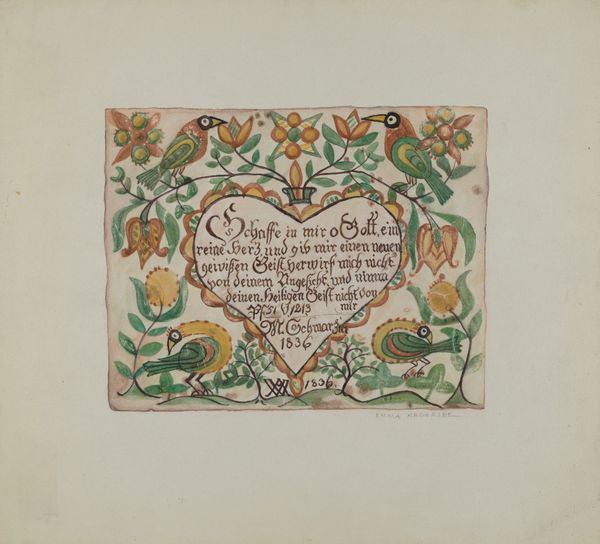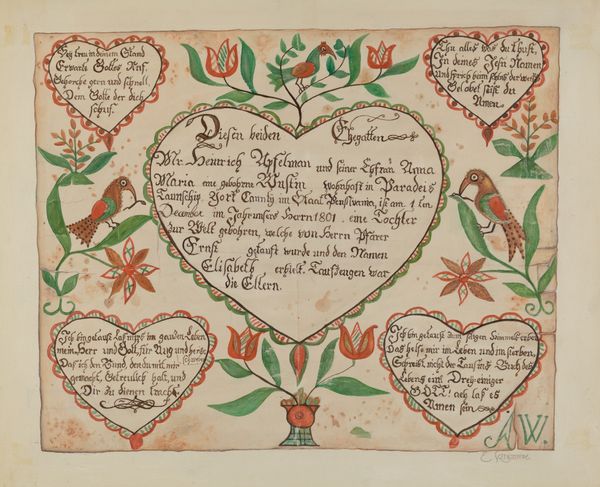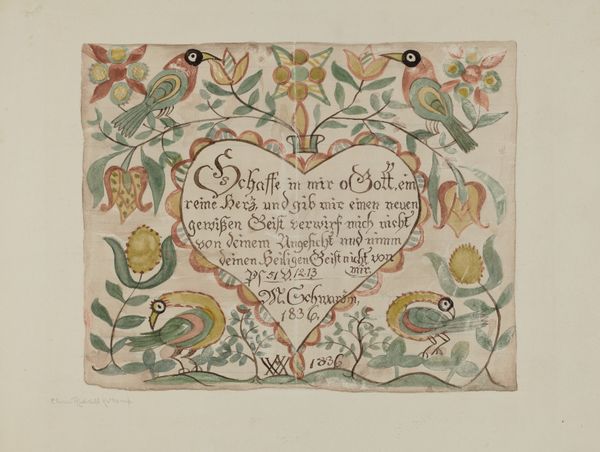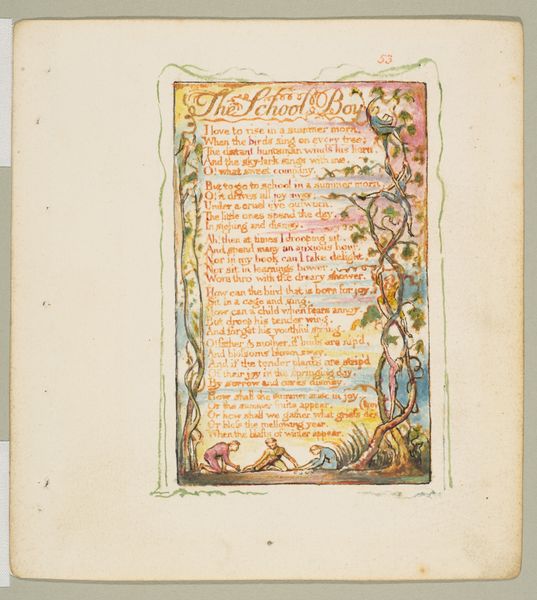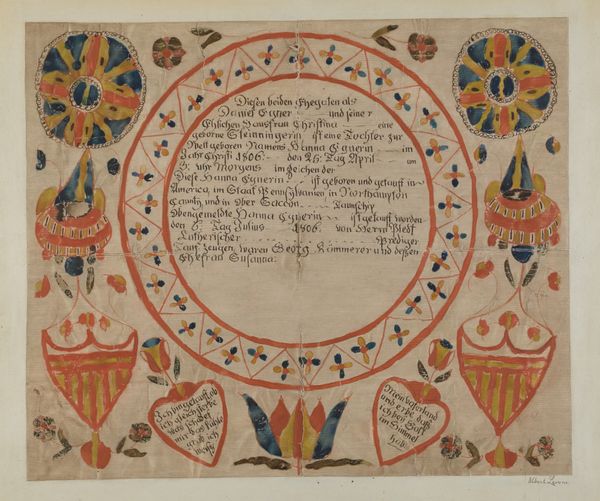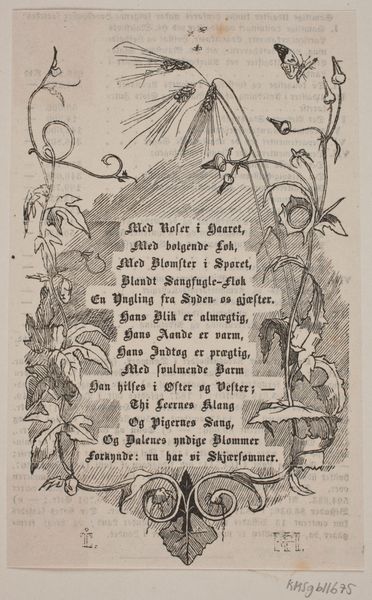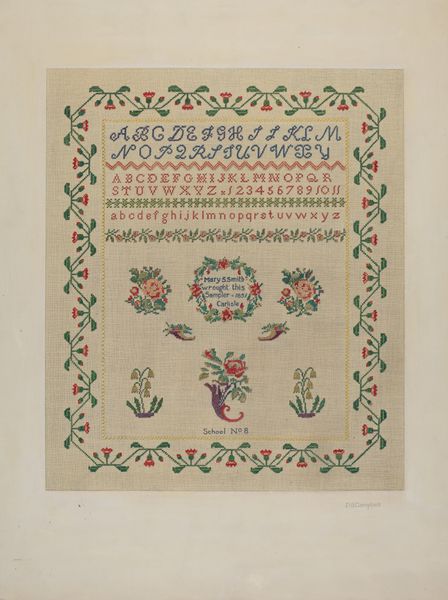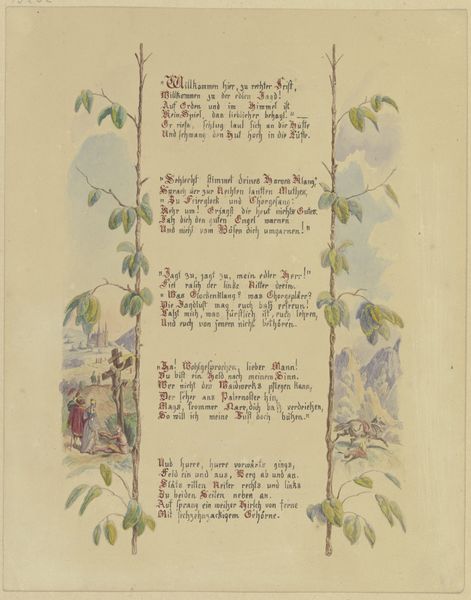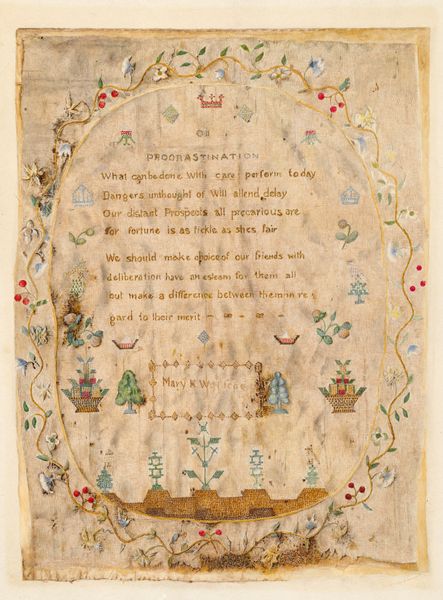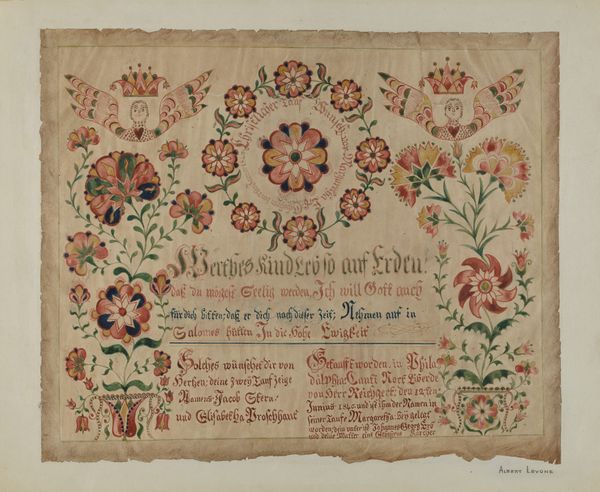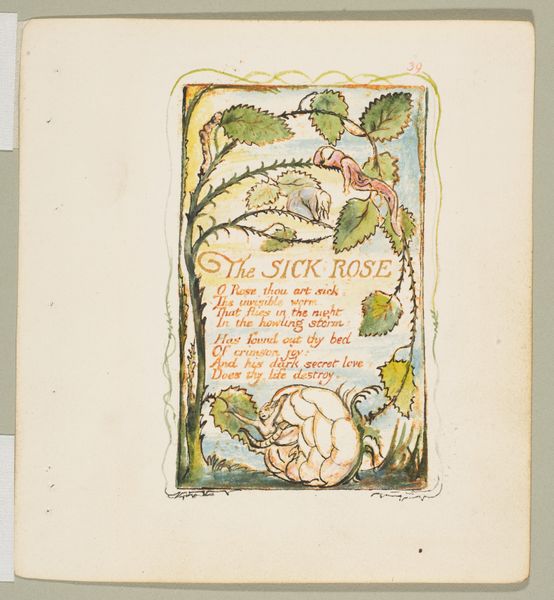
Dimensions: overall: 45.2 x 40.7 cm (17 13/16 x 16 in.)
Copyright: National Gallery of Art: CC0 1.0
Editor: This watercolor woodcut is entitled *Woodcut Vorschrift*, created by Charlotte Angus between 1935 and 1942. It's striking how flat and decorative it feels, like a page from a medieval manuscript, but with folk-art elements. What stands out to you in this piece? Curator: It’s a powerful piece in its directness. See how the figures of Adam and Eve flank the tree, its serpent winding upward, bearing fruit. But consider also how they're surrounded by vibrant, stylized birds and flowers. Do these elements soften the theological blow of the Fall? What emotions do these surrounding icons convey? Editor: I see what you mean. The birds and flowers could be symbols of paradise, but maybe they also emphasize what was lost when Adam and Eve ate from the Tree of Knowledge. There's definitely a contrast. Curator: Exactly. The poem below underscores this. The Fall corrupts human nature and essence, with its inherent gift infecting humanity. This inherited theological debate, depicted in this woodcut, creates a paradox. Is the folk-art style a deliberate choice by the artist to make these heavy subjects accessible? Does it lessen or amplify its significance? Editor: That's an interesting thought. Using familiar imagery from folk art would definitely make the themes relatable. So it would be both accessible and profound. Curator: Indeed. Remember, images accrue meaning through cultural memory. The use of folk-art here weaves this theological narrative into the everyday. Editor: I never considered how deliberate the combination of the style and subject matter could be! Curator: It's in these juxtapositions that art speaks volumes, blending tradition and emotion through instantly recognizable symbols.
Comments
No comments
Be the first to comment and join the conversation on the ultimate creative platform.
